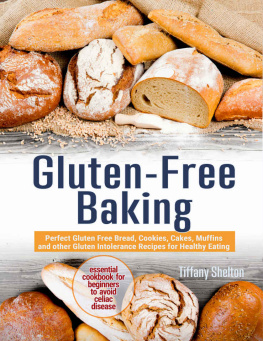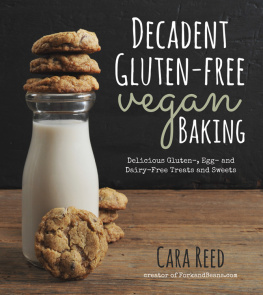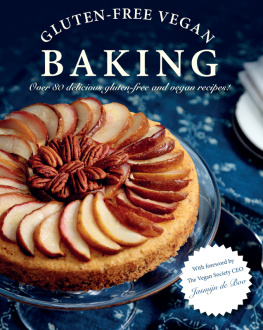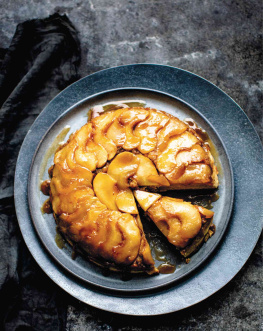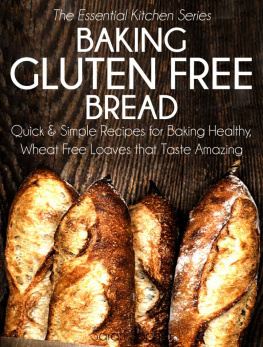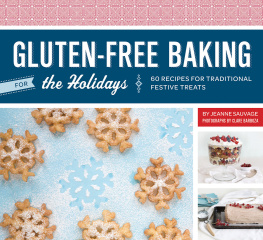

To all cooks and bakers before us, who have made original, delicious dishes and inspired others to do the same bringing great food and families together around the world for generations.
We dedicate this book to our dad, Swen Runkvist, who lived marvelously from September 26, 1948, to December 23, 2013.
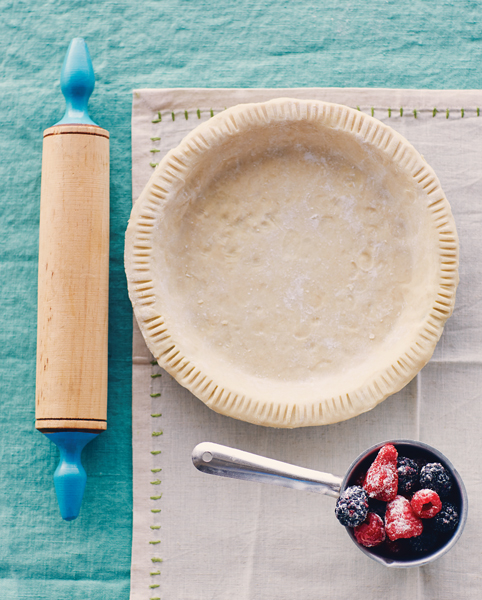
ALSO BY PATRICIA GREEN AND CAROLYN HEMMING
Grain Power
Quinoa Revolution
Quinoa 365

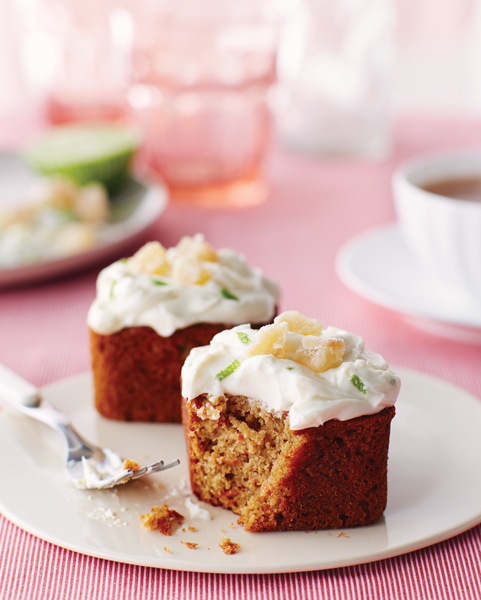
Contents
Introduction
In the loud grade-school lunchroom that smelled of pudding cups and processed cheese, we felt like outcasts with our homemade, rough-cut sandwich slabs of bread filled with grains and seeds. Over the years, our whining ceased as we recognized that Mom was treating us to something special that most kids never had. For us, homemade cookies, breads, buns, cakes and pastries were the norm, and something our mom prided herself on. There was nothing good about those factory cookies, she would remind us. The reason she spent any spare evening hours after work kneading, punching and rising dough, scooping cookies or rolling pastry was simple to her: less processed meant more nutritious. Made yourself with whole foods meant you knew exactly what was inside. And she was right.
While we may not always grind our own flour or have farmers down the road who sell eggs, we do have access to quality ingredients and still bake these childhood treats ourselves. With an increasing selection of ingredients available today (including organic) we can expand our creativity to still maintain some nutrition and enjoy that fresh, home-baked treat. We have included a mix of healthier everyday treats as well as some special baking that is richer and intended for special occasions. When you grab a baked snack, wouldnt you like to know whats inside and that there may even be something good in it, even if its just a rare treat? With these easy recipes we hope you will enjoy the wonderful taste and goodness of home-baking with ancient grains. And dont forget Moms principle: food is medicine and meant to be taken in moderation (especially treats).
Baking homemade gluten-free treats can be easy! Which is lucky, because store-bought gluten-free baked products may not always be what theyre cracked up to be. Todays mass production of consumer foods and ingredients, including those that are gluten-free, means they are usually over-processed and have very little nutrition to offer. Commercially made gluten-free products can be packed with sugar and made almost or completely from starches. The same can be said for many premixed flour blends on the market. There are great benefits to baking from scratch, using naturally gluten-free, ancient grain superfoods that are not genetically modified. Adding naturally gluten-free ingredients such as dried fruit like cranberries and raisins as well as nuts and coconut help to make your recipes tasty and add variety. Cookies, cakes, pastries and breads can leave out the gluten, offer nutrition and still provide the same familiar, tasty baking flavors and textures you expect. After all, if youre going to eat baking, it should be worth it! A wider range of gluten-free products and ingredients in the market also means more possibilities for flavors and texture, so many are enjoying gluten-free simply because of the increased options for variety and taste.
Who is eating gluten-free? People who want to improve their overall health are eating gluten-free, as are athletes (both elite and recreational) and people affected by food allergies, diseases and conditions that impose strict dietary requirements, including celiac disease, wheat allergies, gluten sensitivity, autism, ADHD, IBS and Asperger syndrome.
Many of us find we are now cooking for family members, friends and dinner guests with a myriad of dietary restrictions, food preferences and eating habits (often based on health-conscious or socially ethical reasons). Whether youre eating gluten-free because of allergy, disease or illness, or conscious choice, you need not worry about missing out! We are sure you can eat just as well as, if not better than, people who arent eating gluten-free. There are many alternatives to ingredients that contain gluten, as well as gluten-free store-bought, processed crackers, cookies, pastries, cakes and breads. But there is no substitute for homemade baking, and store-bought, gluten-free processed foods do not come close in taste or nutrition to what you can make yourself with natural, whole, gluten-free ingredients.
Clever food industry marketing and dieting fads once claimed that bread, baking and carbohydrate-based foods were bad for us, but this is not necessarily accurate. We need to remind ourselves that the human brain needs carbohydrates and most certainly cannot function without them. At one time our ancestors likely ate baking including cookies, cakes and breads that was full of nutrition. How is this possible? It contained whole grain, unmodified, unprocessed goodness, including many of the ancient grains we havent been accustomed to eating but are now coming back into our kitchens. Rich in vitamins B, K and A and in the minerals iron, calcium, magnesium, phosphorus, potassium, manganese, zinc, selenium and copper, as well as omega-3 and omega-6 fatty acids, gluten-free ancient grains can provide a range of beneficial elements, some you may never have even heard of. Complete proteins, complex carbohydrates, good fats, enzymes, plant sterols, flavonoids (phytonutrients), antioxidants, dietary fiber, prebiotics, beta glucans, policosanols and resistant starches are some of the goodies on offer.
Gluten-free ancient grains can help to lower cholesterol and blood pressure, inhibit inflammation, prevent heart disease and stroke, suppress appetite, prevent cancers, promote alkalinity, stabilize blood sugar, manage diabetes or even help prevent type 2 diabetes, improve immune function, hydrate intestines and promote good digestion and nutrient absorption, metabolize fats, repair body tissues, prevent childhood asthma, increase serotonin, prevent upper respiratory symptoms, promote quick healing, prevent bone and muscle loss, prevent gallstones, soothe skin conditions and prevent tumor growth and macular degeneration to name just a few of their helpful properties. Many whole foods not only are naturally gluten-free with tremendous nutritive value to offer, but also have characteristics that make them ideal ingredients in cooking and baking today. So why not use them?
Whether you must be or are choosing to be gluten-free, processed, packaged, gluten-free foods are not the solution and may not be the best for your health. Simply being labeled gluten-free does not make processed and packaged foods automatically healthy. Over-processed ingredients and fillers can lack important vitamins, minerals and fiber and offer no real nutritional value. Some processed, gluten-free ingredients may even have negative aspects such as being high in calories, sugar, salt, fat and additives that can cause poor digestion leading to constipation, weight gain or even more serious problems. Homemade gluten-free baking is the answer to these processed, poorly nutritive substitutes. All the recipes in this book are made gluten-free, using flours and ingredients that do not contain gluten; however, you need to ensure that you purchase ingredients that are processed in gluten-free facilities and are clearly labeled as such on the package. Even foods that are not usually known to contain gluten may have trace amounts or be contaminated by gluten from processing or where theyre grown, from proximity or just via circumstances that occur in nature. (For example, oats are often contaminated by gluten, so be aware of this and purchase only products labeled gluten-free.) Also, some ingredients may have come into contact with or contain gluten even though they should not. They may include but are not limited to oats and oat bran, sour cream, baking powder, cornstarch, spices and seasonings, nuts, puffed rice or corn, vanilla extract, powdered (icing) sugar, mayonnaise, chocolates, grated cheese, yogurts, soy products, starches and yeast. Gluten may be indicated on nutritional labels as malt, couscous, farina, bulgur or seitan, or even appear in Latin as hordeum vulgare, triticum vulgare, or secale cereale. Read the labels and be sure.
Next page





